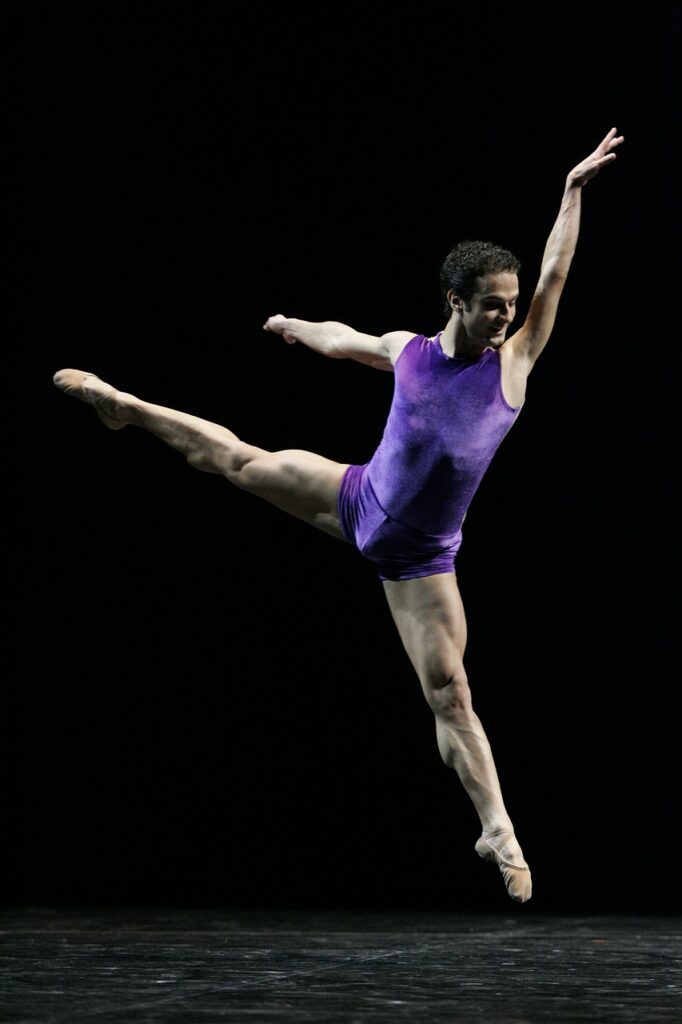If you find yourself naturally stiff and longing to improve your flexibility, the practice of yoga may be just the solution for you. Many people, including those who are naturally inflexible, have discovered the incredible benefits that yoga can have on their overall flexibility. With its unique combination of stretching, deep breathing, and mindful movements, yoga has the potential to unlock tight muscles and increase your range of motion. In this article, we will explore the ways in which yoga can help improve flexibility for those who have always considered themselves “stiff.” So grab your yoga mat, and let’s get ready to explore the wonders of yoga for improving flexibility.

Understanding Flexibility
Definition of flexibility
Flexibility refers to the ability of a joint or muscle to move through its full range of motion. It is an important component of overall fitness and plays a key role in preventing injuries. When you have good flexibility, your body can perform daily activities with ease and efficiency.
Factors affecting flexibility
Several factors can affect your flexibility. These include age, genetics, lifestyle, and physical activity level. As we age, our joints tend to become stiffer, making it vital to engage in activities that enhance flexibility. Genetics also play a role, as some individuals naturally have more flexibility than others. Additionally, a sedentary lifestyle and lack of regular exercise can contribute to decreased flexibility over time.
Yoga and Flexibility
How yoga can improve flexibility
Yoga is a holistic practice that combines physical postures, breathing exercises, and meditation. It is well-known for its ability to improve flexibility. When you perform yoga poses, you gradually stretch and strengthen your muscles, tendons, and ligaments. This repetitive stretching helps to increase the elasticity and range of motion of your body, making it easier to move and preventing injuries.
Benefits of yoga for flexibility
In addition to improving flexibility, practicing yoga offers several other benefits. It increases strength and balance, enhances posture, promotes relaxation, reduces stress, and improves overall body awareness. Yoga also helps to lengthen tight muscles and release tension in the body, leading to improved flexibility over time.
Yoga Poses for Naturally Stiff Individuals
Specific yoga poses targeting flexibility
For individuals who are naturally stiff, certain yoga poses can be particularly beneficial in improving flexibility. These poses focus on stretching major muscle groups, such as the hamstrings, hips, shoulders, and lower back. Some examples of poses that target flexibility include the Forward Fold (Uttanasana), Downward-Facing Dog (Adho Mukha Svanasana), and Extended Triangle Pose (Trikonasana). These poses gently lengthen and stretch tight muscles, gradually increasing flexibility.
Modifications for beginners
If you are new to yoga or have limited flexibility, there are modifications available to make the poses more accessible. Props such as blocks, straps, or bolsters can be used to assist in achieving proper alignment and provide support during poses. Yoga instructors can guide you on how to modify poses based on your individual needs, allowing you to safely and effectively improve your flexibility, even as a beginner.
Regular Practice and Progress
Consistency is key
Consistency is vital when it comes to improving flexibility through yoga. Engaging in regular practice, even if it’s just a few times a week, allows your body to adapt and gradually increase its range of motion. Making yoga a part of your routine and prioritizing it can lead to more significant improvements in flexibility over time.
Tracking progress
To stay motivated and see the progress you’re making, it can be helpful to track your flexibility journey. Keep a record of the poses you can do and the ones that challenge you the most. Notice the difference in how far you can reach or how deeply you can stretch over time. This tracking not only helps you celebrate your achievements but also allows you to tailor your practice to focus on areas that need more attention.

Overcoming Challenges
Pain and discomfort
It’s essential to listen to your body and avoid pushing yourself too hard, especially if you experience pain or discomfort during a yoga practice. Yoga should never cause severe pain. If a pose feels uncomfortable, it’s a sign to back off or modify it to a more accessible variation. Build flexibility gradually, honoring and respecting your body’s limits, to prevent injuries and maintain a positive yoga experience.
Motivation and discipline
Consistently practicing yoga to improve flexibility requires motivation and discipline. Some days, you might feel less motivated or encounter obstacles that make it challenging to fit in a practice session. In these moments, remind yourself of the benefits you’re experiencing and how you feel after a yoga session. Set realistic goals and create a supportive environment to help maintain motivation and develop discipline in your yoga journey.
Combining Yoga with Other Techniques
Supplementing yoga with stretching exercises
While yoga can effectively improve flexibility, you can also supplement your practice with additional stretching exercises. Incorporating dynamic stretches before your yoga session or static stretches afterward can enhance your overall flexibility. Dynamic stretches involve moving through a full range of motion, while static stretches involve holding a stretch for a prolonged period. You can explore different stretching techniques to find what works best for your body.
Incorporating other forms of exercise
In addition to stretching exercises, incorporating other forms of exercise into your routine can also contribute to increased flexibility. Activities such as Pilates, dance, or martial arts can complement your yoga practice and provide diverse movements that challenge and stretch your body in different ways. Cross-training and exploring a variety of exercise modalities can help improve overall flexibility and prevent muscle imbalances.

Understanding Your Body
Listening to your body
One of the essential aspects of practicing yoga for flexibility is learning to listen to your body. Every individual is unique, and what works for one person may not work for another. Pay attention to your body’s signals, such as sensations of tightness or resistance, and honor them. If a pose feels too intense, modify or skip it altogether. By listening and responding to what your body needs, you can practice yoga in a way that supports and enhances your flexibility journey.
Knowing your limits
While it is important to challenge yourself to improve flexibility, it is equally important to know your limits. Pushing beyond your capabilities can lead to overstretching, strains, or injuries. Work within a range of motion that feels comfortable and allows you to maintain proper alignment. Over time, as you consistently practice and progress, you may find that your limits expand, but always in a safe and controlled manner.
Working with a Yoga Instructor
The importance of proper guidance
Working with a knowledgeable yoga instructor can greatly enhance your yoga practice and improve flexibility. They can guide you through proper alignment, provide modifications, and offer personalized guidance tailored to your unique needs. A qualified instructor can also help you identify any areas of tightness or imbalance, offering specific poses and exercises to address them effectively.
Finding a knowledgeable instructor
When seeking a yoga instructor, it’s important to find someone with appropriate qualifications and experience. Look for instructors who have completed a reputable yoga teacher training program and possess relevant certifications. Reading reviews, seeking recommendations, and attending introductory classes or workshops can help you assess an instructor’s teaching style, expertise, and ability to effectively guide you in improving flexibility.
Developing a Home Practice
Creating a personalized routine
Building a home yoga practice allows you to practice at your convenience, and it can be tailored to your specific flexibility goals. Start by setting aside dedicated time and space for your practice. Create a routine that includes a variety of yoga poses targeting different areas of the body. Focus on areas where you want to improve flexibility, incorporating both dynamic and static stretches. As you become more familiar with your body and its needs, you can modify and adjust your routine accordingly.
Utilizing online resources
In today’s digital age, there are numerous online resources available to support your home yoga practice. Websites, mobile applications, and video platforms offer a wide range of instructional videos, guided sessions, and pose tutorials. Look for reputable sources that provide clear instructions, proper alignment cues, and options for different levels of flexibility. These resources can be a valuable tool in developing and maintaining a consistent home practice.
Precautions and Considerations
Physical limitations
It is crucial to consider any physical limitations or pre-existing conditions before engaging in a yoga practice for flexibility. If you have any injuries, chronic pain, or medical concerns, consult with a healthcare professional before starting or modifying your exercise routine. They can provide guidance on how to safely adapt poses or suggest alternative movements that accommodate your specific needs.
Consulting a healthcare professional
If you have any doubts or concerns about starting a yoga practice for flexibility, it is always wise to consult a healthcare professional. They can assess your overall health, evaluate any specific limitations or risks, and provide personalized advice. This professional guidance ensures that you embark on your flexibility journey with the necessary precautions and considerations for optimal health and safety.
By understanding flexibility, exploring the benefits of yoga, practicing regularly, overcoming challenges, combining techniques, understanding your body, seeking guidance, developing a home practice, and taking precautions, you can embark on a fulfilling yoga journey that enhances your flexibility and overall well-being. Remember to approach your practice with patience, kindness towards yourself, and a willingness to embrace the process. You have the power to improve your flexibility and enjoy the numerous benefits that yoga can bring to your life. So roll out your mat, take a deep breath, and let the journey unfold. Namaste.
